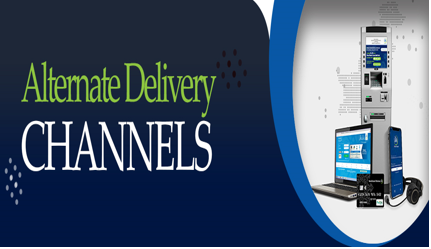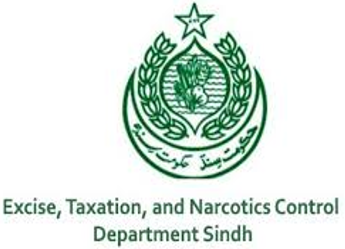i INP-WEALTHPK
Ahmed Khan Malik
The Sindh government has intensified efforts to implement the Alternate Delivery Channel (ADC) mechanism across various sectors to enhance public service delivery.

"This move aims to ensure greater transparency, efficiency, and citizen-centric governance, especially in areas where traditional government processes have been mired in delays, bureaucratic hurdles, and limited accessibility,” officials told WealthPK.
The ADC mechanism is essentially a digital and technology-driven framework that enables the delivery of government services through alternative platforms, such as mobile applications, online portals, automated kiosks, call centers, and authorized partner networks, including banks and post offices.
"These channels are being developed to supplement, and in some cases, replace the conventional in-person service model, with a focus on improving convenience, accessibility, and accountability,” Nazim Samajeo, Director of the Finance Department, said.

In Sindh, where infrastructural challenges, population density, and geographic diversity pose persistent issues for smooth public service delivery, the ADC mechanism holds significant promise. Over the past year, various departments under the Sindh government — including excise, taxation, narcotics control, local government, health, and education — have piloted or initiated ADC frameworks to simplify their interaction with the public.
Nazim said one of the earliest success stories comes from the Sindh Revenue Board (SRB), which has increasingly utilized digital platforms to facilitate tax payments and compliance. By enabling tax submissions through mobile banking, internet banking, and over-the-counter (OTC) partner banks, the SRB has not only widened its taxpayer base but also improved collections and reduced manual errors.
Similarly, the Excise and Taxation Department has introduced online vehicle tax payments and registration renewals, allowing citizens to carry out transactions from the comfort of their homes.
"These services have been well-received in urban areas like Karachi and Hyderabad, where digital literacy and smartphone penetration are comparatively high," he said. However, he noted that there is a need to extend support to rural populations through awareness campaigns and physical help desks that complement digital rollouts.
Nazim pointed out that a key focus area for the ADC strategy in Sindh is promoting financial inclusion and service access for underprivileged communities. To this end, the provincial government is working in collaboration with financial institutions and telecom operators to develop integrated platforms that can reach users even in remote districts.
For instance, ADC-enabled cash transfer programs and biometric-enabled payment systems have already been employed to support flood-affected communities and disburse social protection funds more securely.
Ahmed Soomro, Director of the Information, Science and Technology Department, said significant investments are being made to upgrade the IT infrastructure required to support ADC services. This includes setting up secure data centers, integrating interoperable software solutions, and establishing cybersecurity protocols to protect sensitive user information.
While challenges remain — particularly in areas such as digital literacy, internet connectivity, and resistance to change within departments — the overall trajectory appears promising, he said. He said the ADC mechanism can drastically reduce corruption, improve service delivery timelines, and bridge the urban-rural divide in access to government services. Sindh is well-positioned to lead this transformation if the momentum continues, he added.
The public response so far has been cautiously optimistic, he said, adding that the continued dialogue between the government entities, technology partners, and community stakeholders will shape the future of ADC deployment in the province.
Credit: INP-WealthPk



